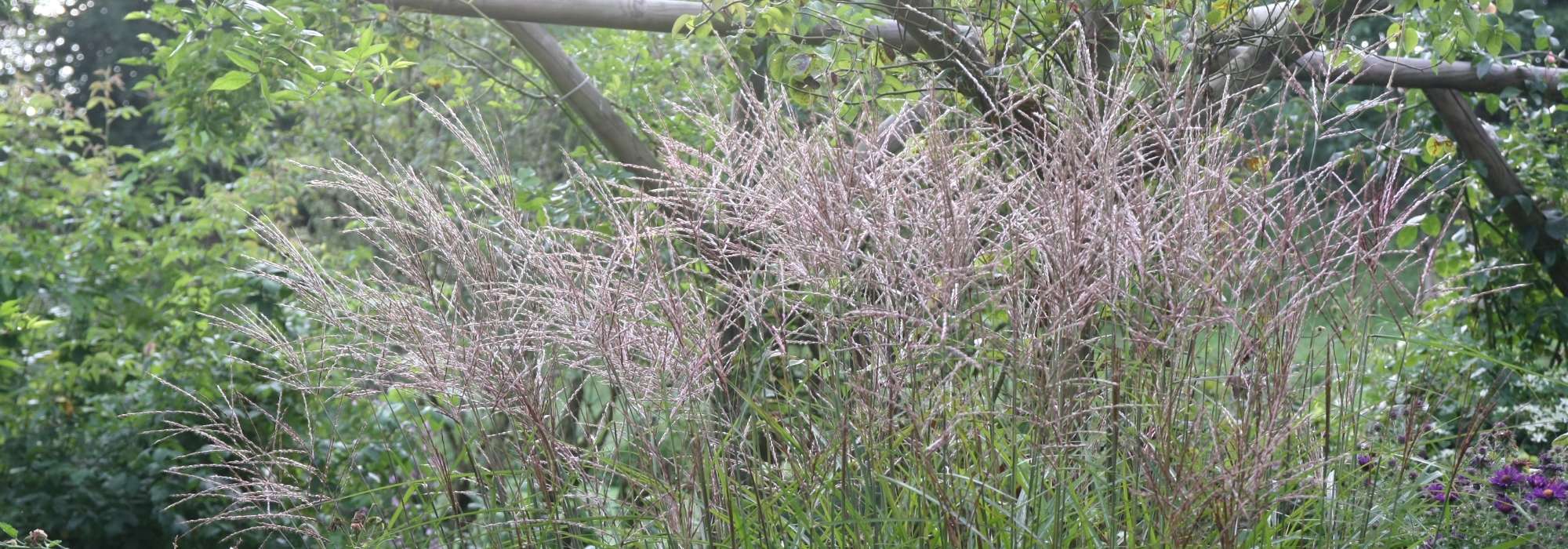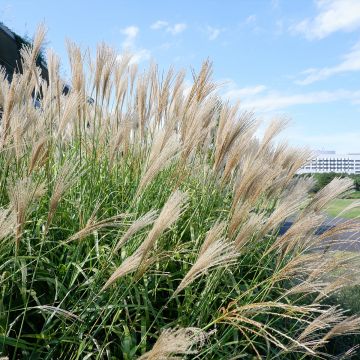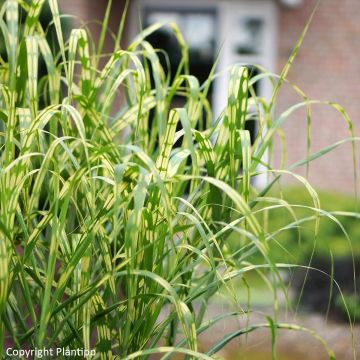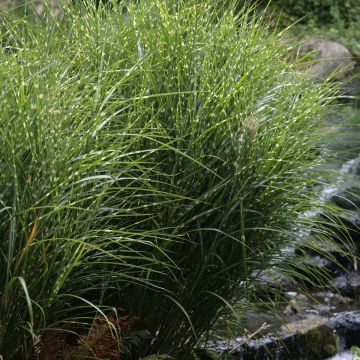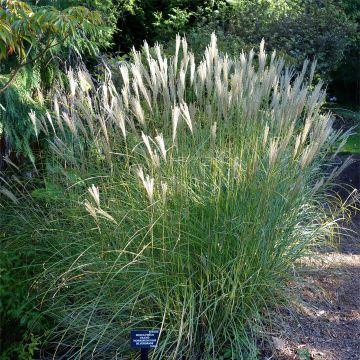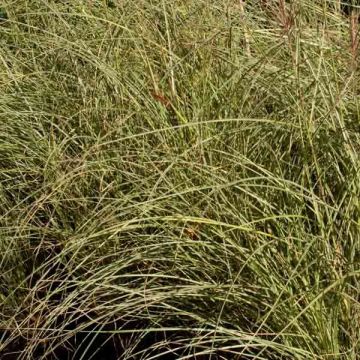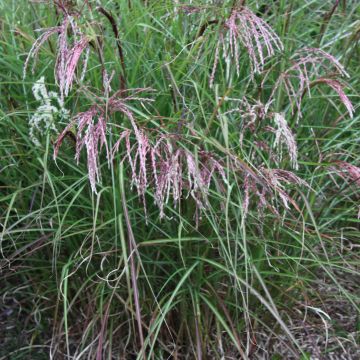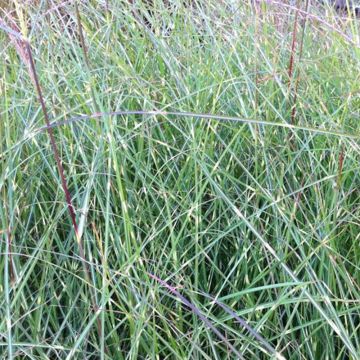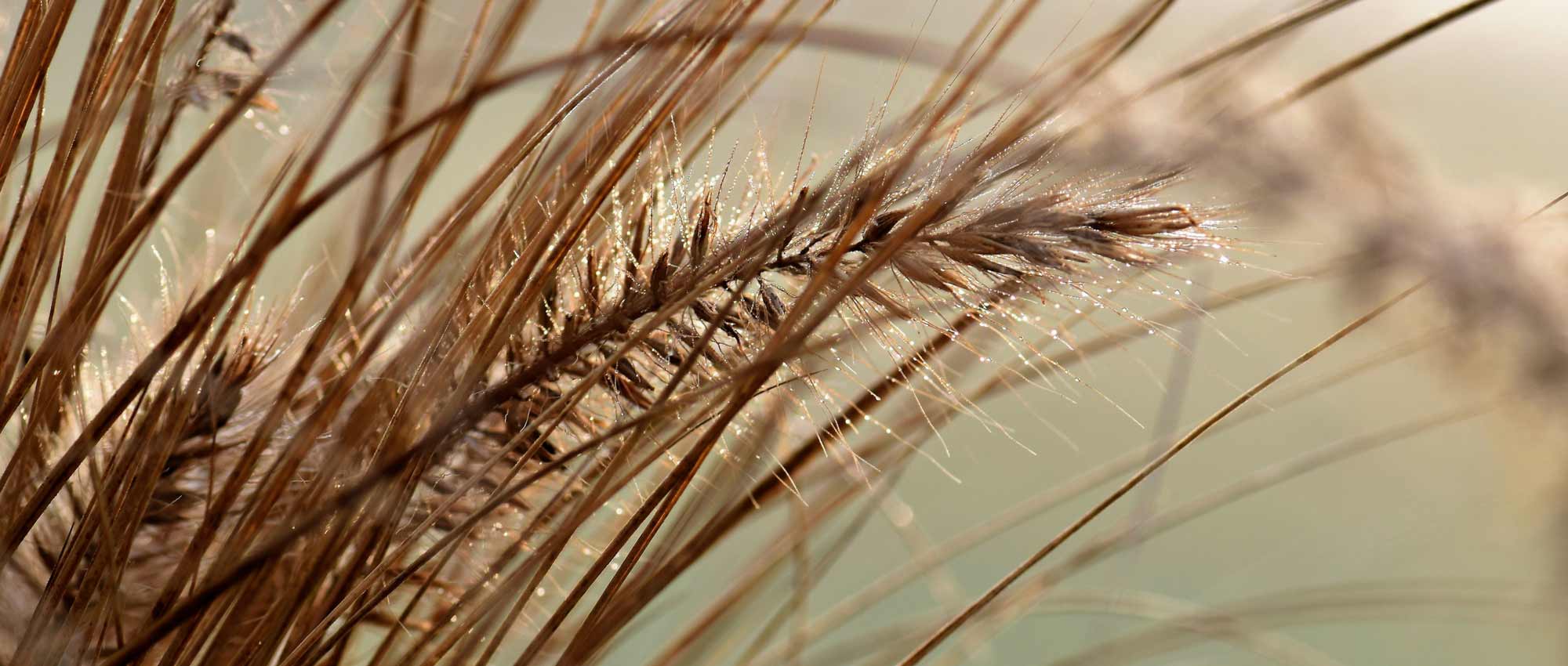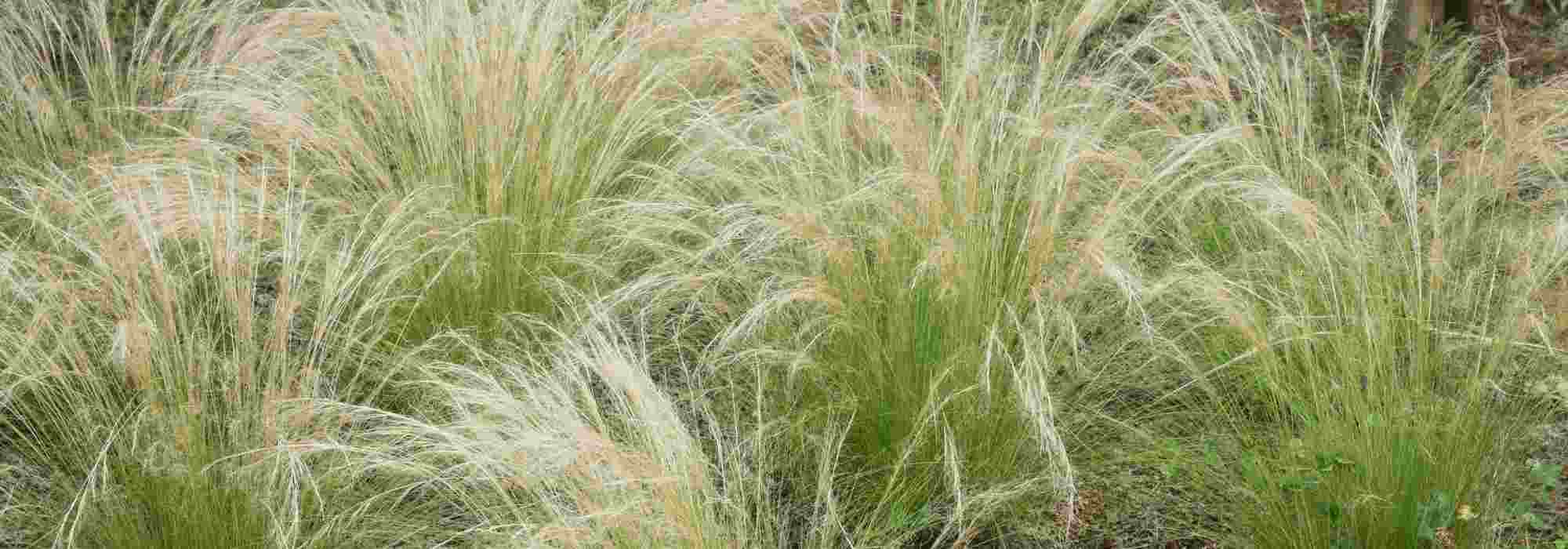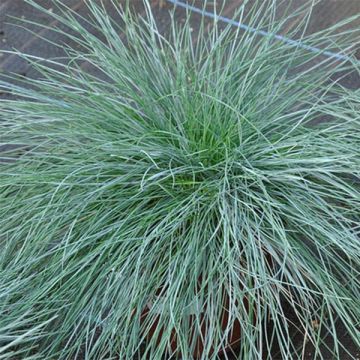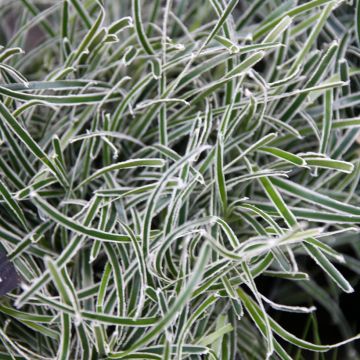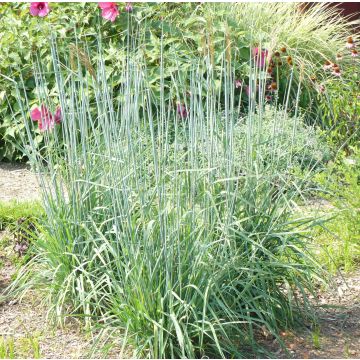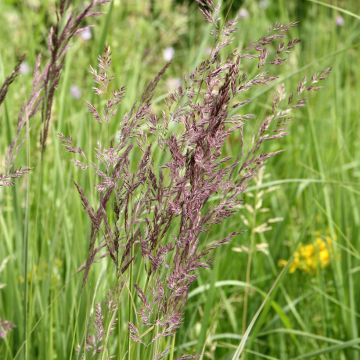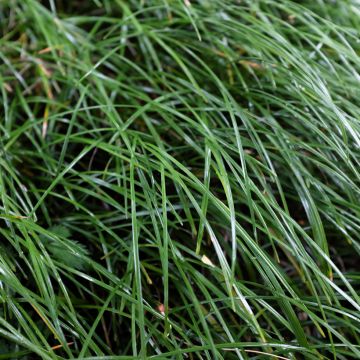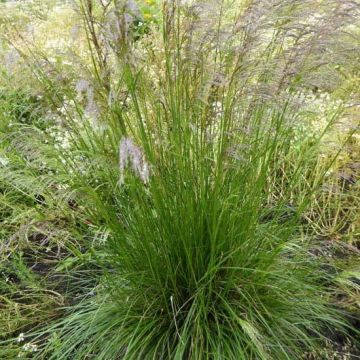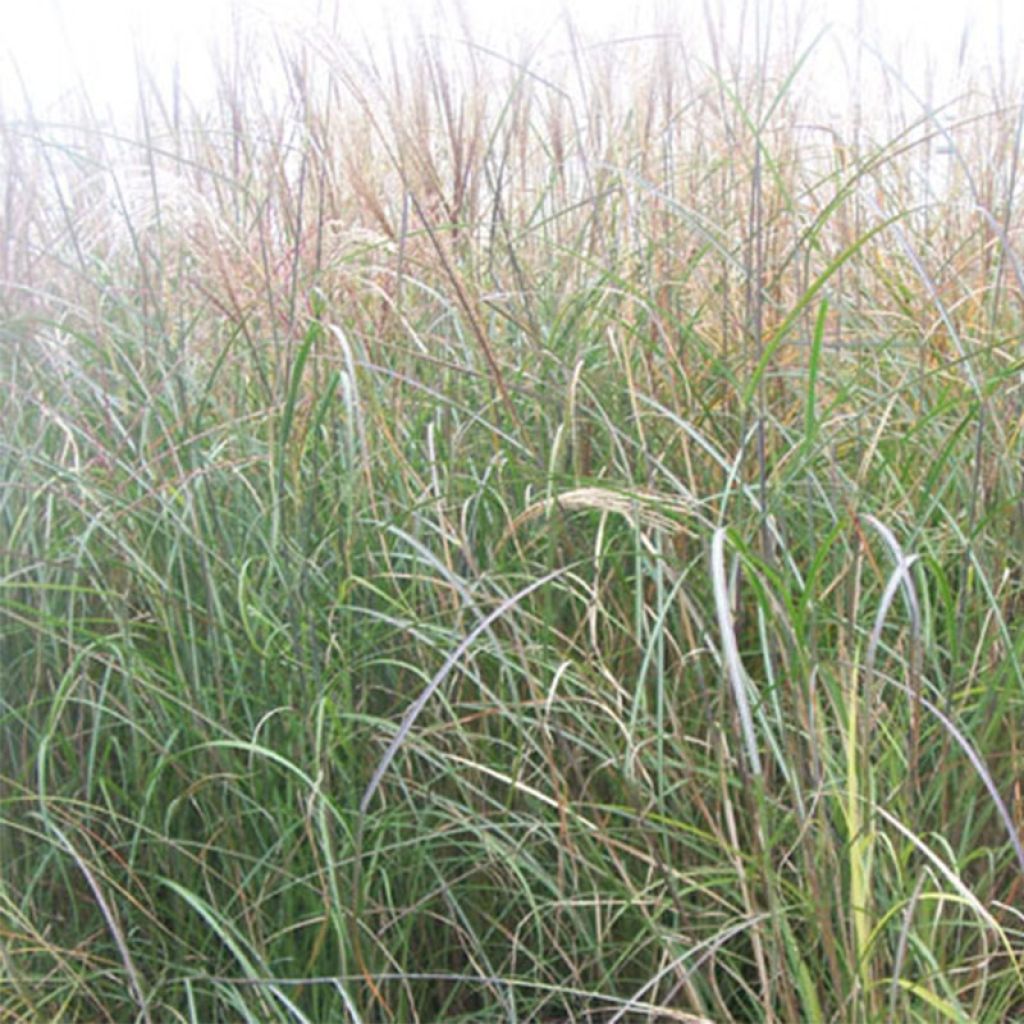

Miscanthus sinensis Kleine Silberspinne - Silvergrass
Miscanthus sinensis Kleine Silberspinne - Silvergrass
Miscanthus sinensis Kleine Silberspinne
Eulalia, Porcupine Grass, Chinese silver Grass, Maiden Grass, Zebra Grass, Susuki Grass
Every other plan on hold?
CLAUDE P., 23/05/2018
Special offer!
Receive a €20 voucher for any order over €90 (excluding delivery costs, credit notes, and plastic-free options)!
1- Add your favorite plants to your cart.
2- Once you have reached €90, confirm your order (you can even choose the delivery date!).
3- As soon as your order is shipped, you will receive an email containing your voucher code, valid for 3 months (90 days).
Your voucher is unique and can only be used once, for any order with a minimum value of €20, excluding delivery costs.
Can be combined with other current offers, non-divisible and non-refundable.
Home or relay delivery (depending on size and destination)
Schedule delivery date,
and select date in basket
This plant carries a 12 months recovery warranty
More information
We guarantee the quality of our plants for a full growing cycle, and will replace at our expense any plant that fails to recover under normal climatic and planting conditions.

Would this plant suit my garden?
Set up your Plantfit profile →
Description
Miscanthus sinensis 'Kleine Silberspinne' is a dwarf cultivar of 'Silberspinne'. It shares all its characteristics except for its compact and stocky habit that sets it apart from its larger counterpart. The narrow, ribbon-like leaves are dark green with white veins and turn bright hues of red and orange during autumn. It has a dense, upright, and stocky growth habit, making it an attractive ornamental grass for most of the year. In September, the relatively loose panicles bloom, tinged with red and white, and become silvery and fluffy at maturity. This grass is perfect for small gardens, perennial borders, or container gardening.
Kleine Silberspinne, also known as Chinese silver grass, is a type of plant that belongs to the Poaceae family. It is a horticultural form originating from Miscanthus sinensis, native to East Asia and Oceania. This tall perennial grass has short rhizomes and grows in a non-running clump, forming a dense and upright habit. It can reach up to 1 metre (3 to 4 feet) in height, with a spread of 50 cm (19.7 in). The leaves are slender, long, and flexible, initially dark green with white veins, then turning coppery-red in autumn. From September to November, long floral stems emerge from the foliage in finger-like, silky spikes that measure 20 cm (7.9 in) in length, tinted pinkish-red with white. As they fade, they take on a silvery hue. The plumes consist of tiny reddish flowers that close up a bit afterwards, then open again at maturity, taking on a paler and fluffier appearance.
Miscanthus is a deciduous plant that remains interesting throughout most of the winter. It is a grass intended to be planted in the background of large borders, where its strong presence brings a beautiful structure and a lot of grace. It is suitable for wild gardens and contemplative gardeners. If you plant it among asters, garden chrysanthemums or perpetual roses, you can watch it grow and fill out, play with the wind and the low autumn light, and bend under the showers. These grasses can add volume and texture to perennial borders, lightening the flowering displays. In modern gardens with clean lines, they can be planted alongside dwarf bamboo or ferns, especially if the soil is moist. If you have an urban garden, Miscanthus 'Kleine Silberspinne' can be used to soften concrete structures. Cultivating it in large containers is also highly recommended, allowing you to furnish the terrace or balcony with great elegance and simplicity.
Miscanthus sinensis Kleine Silberspinne - Silvergrass in pictures
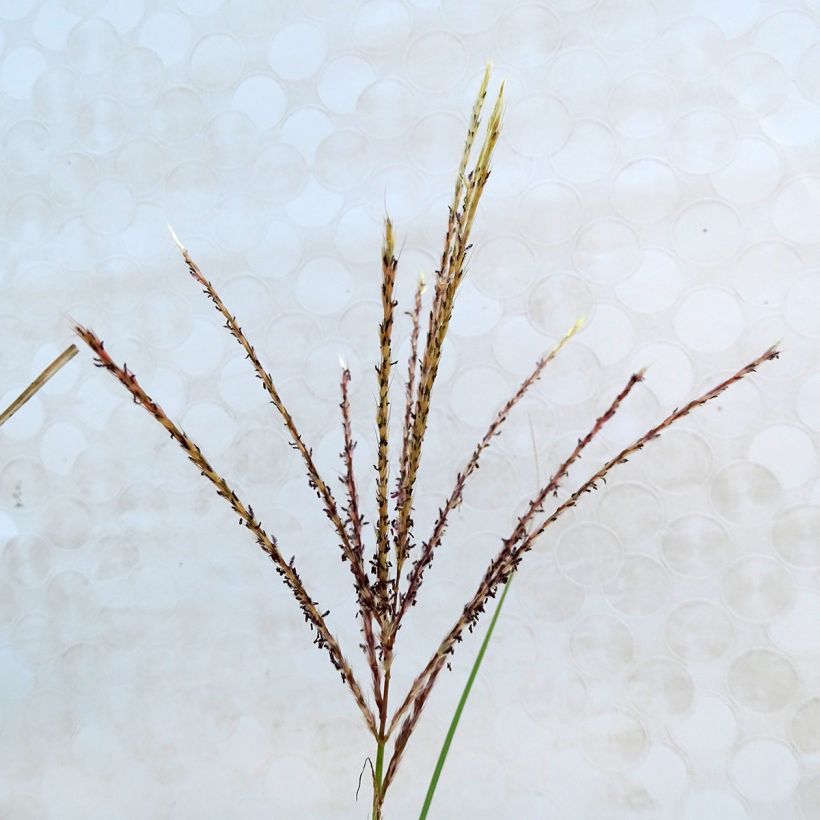

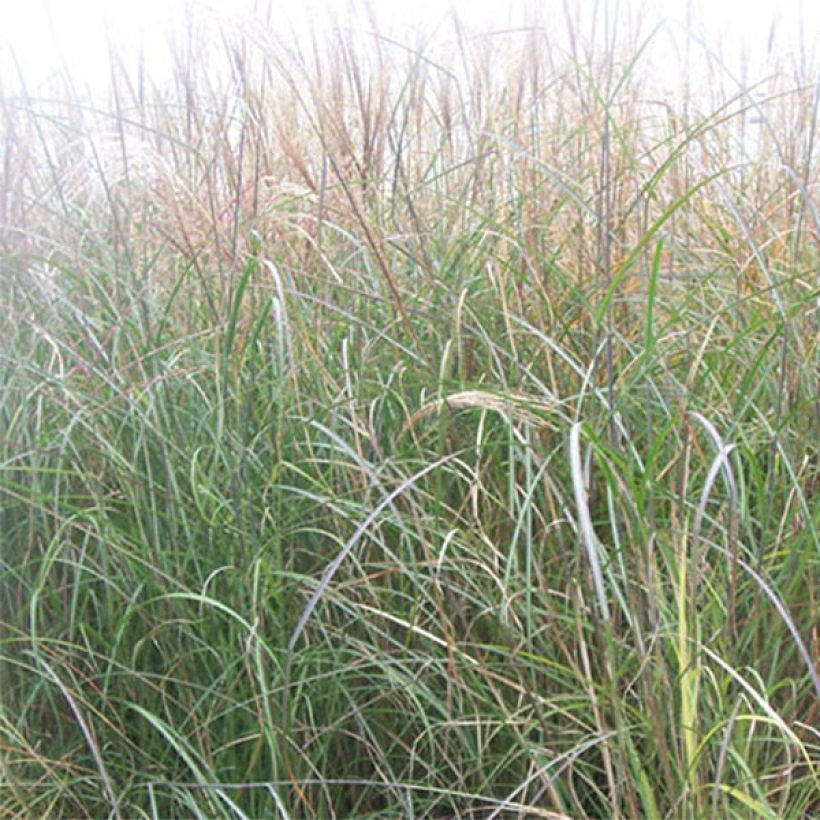

Flowering
Foliage
Plant habit
Botanical data
Miscanthus
sinensis
Kleine Silberspinne
Poaceae
Eulalia, Porcupine Grass, Chinese silver Grass, Maiden Grass, Zebra Grass, Susuki Grass
Cultivar or hybrid
Other Miscanthus
View all →Planting and care
Miscanthus sinensis 'Kleine Siberspinne' thrives in warm locations and requires a healthy, relatively rich, deep soil that is well-draining yet remains moist in summer. This plant can tolerate occasional drought if the soil is deep; however, it can adapt to poor soils where it may not be as spectacular. It is best to cut back the foliage to ground level at the beginning of spring after the frosts have passed. For container planting, choose a large container with a minimum size of 30L, filled with a nutrient-rich and well-draining growing medium. A mixture of 20% good garden soil, 20% drainage (gravel or coarse sand), and 60% horticultural compost is recommended. Apply well-rotted compost once or twice a year (end of winter and autumn) or a slow-release fertiliser for optimal growth.
Planting period
Intended location
Care
Planting & care advice
-
, onOrder confirmed
Reply from on Promesse de fleurs
Similar products
Haven't found what you were looking for?
Hardiness is the lowest winter temperature a plant can endure without suffering serious damage or even dying. However, hardiness is affected by location (a sheltered area, such as a patio), protection (winter cover) and soil type (hardiness is improved by well-drained soil).

Photo Sharing Terms & Conditions
In order to encourage gardeners to interact and share their experiences, Promesse de fleurs offers various media enabling content to be uploaded onto its Site - in particular via the ‘Photo sharing’ module.
The User agrees to refrain from:
- Posting any content that is illegal, prejudicial, insulting, racist, inciteful to hatred, revisionist, contrary to public decency, that infringes on privacy or on the privacy rights of third parties, in particular the publicity rights of persons and goods, intellectual property rights, or the right to privacy.
- Submitting content on behalf of a third party;
- Impersonate the identity of a third party and/or publish any personal information about a third party;
In general, the User undertakes to refrain from any unethical behaviour.
All Content (in particular text, comments, files, images, photos, videos, creative works, etc.), which may be subject to property or intellectual property rights, image or other private rights, shall remain the property of the User, subject to the limited rights granted by the terms of the licence granted by Promesse de fleurs as stated below. Users are at liberty to publish or not to publish such Content on the Site, notably via the ‘Photo Sharing’ facility, and accept that this Content shall be made public and freely accessible, notably on the Internet.
Users further acknowledge, undertake to have ,and guarantee that they hold all necessary rights and permissions to publish such material on the Site, in particular with regard to the legislation in force pertaining to any privacy, property, intellectual property, image, or contractual rights, or rights of any other nature. By publishing such Content on the Site, Users acknowledge accepting full liability as publishers of the Content within the meaning of the law, and grant Promesse de fleurs, free of charge, an inclusive, worldwide licence for the said Content for the entire duration of its publication, including all reproduction, representation, up/downloading, displaying, performing, transmission, and storage rights.
Users also grant permission for their name to be linked to the Content and accept that this link may not always be made available.
By engaging in posting material, Users consent to their Content becoming automatically accessible on the Internet, in particular on other sites and/or blogs and/or web pages of the Promesse de fleurs site, including in particular social pages and the Promesse de fleurs catalogue.
Users may secure the removal of entrusted content free of charge by issuing a simple request via our contact form.
The flowering period indicated on our website applies to countries and regions located in USDA zone 8 (France, the United Kingdom, Ireland, the Netherlands, etc.)
It will vary according to where you live:
- In zones 9 to 10 (Italy, Spain, Greece, etc.), flowering will occur about 2 to 4 weeks earlier.
- In zones 6 to 7 (Germany, Poland, Slovenia, and lower mountainous regions), flowering will be delayed by 2 to 3 weeks.
- In zone 5 (Central Europe, Scandinavia), blooming will be delayed by 3 to 5 weeks.
In temperate climates, pruning of spring-flowering shrubs (forsythia, spireas, etc.) should be done just after flowering.
Pruning of summer-flowering shrubs (Indian Lilac, Perovskia, etc.) can be done in winter or spring.
In cold regions as well as with frost-sensitive plants, avoid pruning too early when severe frosts may still occur.
The planting period indicated on our website applies to countries and regions located in USDA zone 8 (France, United Kingdom, Ireland, Netherlands).
It will vary according to where you live:
- In Mediterranean zones (Marseille, Madrid, Milan, etc.), autumn and winter are the best planting periods.
- In continental zones (Strasbourg, Munich, Vienna, etc.), delay planting by 2 to 3 weeks in spring and bring it forward by 2 to 4 weeks in autumn.
- In mountainous regions (the Alps, Pyrenees, Carpathians, etc.), it is best to plant in late spring (May-June) or late summer (August-September).
The harvesting period indicated on our website applies to countries and regions in USDA zone 8 (France, England, Ireland, the Netherlands).
In colder areas (Scandinavia, Poland, Austria...) fruit and vegetable harvests are likely to be delayed by 3-4 weeks.
In warmer areas (Italy, Spain, Greece, etc.), harvesting will probably take place earlier, depending on weather conditions.
The sowing periods indicated on our website apply to countries and regions within USDA Zone 8 (France, UK, Ireland, Netherlands).
In colder areas (Scandinavia, Poland, Austria...), delay any outdoor sowing by 3-4 weeks, or sow under glass.
In warmer climes (Italy, Spain, Greece, etc.), bring outdoor sowing forward by a few weeks.






























